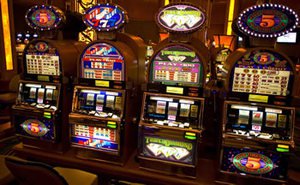Canadian online casino reviews, free casino games, casino bonuses, news, expert guides & more.

For those with creative minds and a love for gambling, there's more than just playing at a casino's tables and machines as a potential source of income.
Every year there are between seven to ten unique new games and about 50 variations on existing games approved for trial by Nevada's Gaming Control Board. While most of the applications that are submitted come from companies and people that create games professionally, the opportunity for anyone with an idea to submit and reap the rewards from their game designs. Jonné Brunette, a NGCB agent in the enforcement division, says, "someone literally might come to us with a concept drawn out on paper; they can be that rudimentary. People have pitched anything under the sun. It is amazing what has been submitted to us."
Before taking their idea to the board, the creator should be testing it's playability and rule set and tweaking the game as necessary in order to make it as easy to understand and get into as possible. Once they feel that the game is ready to move on, it's time to get a patent through an attorney which can prove to be a barrier for entry as the cost for this step could cost between ten and thirty thousand dollars. Finding a casino to allow the game in for trial is next, with the need to bring on a specialist for computer analysis of it's outcomes, at a cost around $10000, plus the creation of promotional material for the sales pitch. Once it goes to a casino for trial, there is a monthly trial fee that costs thousands of dollars on top of the casino keeping any of the profits turned by the game during it's test period.
Following that is the Gaming Control Board's application process which, on top of a $3000 fee, requires approval requests, rules, payouts, Patent and Trademark Office receipt, laboratory testing certification, and a personal history from the applicant. The game then undergoes scrutiny from every angle including a field trial period which will gather further data to measure the viability of the game on the open casino market. A majority of the games that make it far enough to pass this trial period end up being approved and find their way to casino floors where the general public are free to make or break it through their interest and willingness to play, and more importantly, pay.
For the inventor, this is when the moments of truth happen, through distribution and popularity of their creation and with a low success rate at this level where few games move forward past one gaming location. Since casinos almost always pay a flat rate to lease the games per location instead of profit sharing, side bet options pay in a range that can go up to several hundred dollars per month, and up to $1500 monthly for the core game. These payments, of course, go to the game's distributor, not directly to the inventor. The game's creator can expect to see just 20% of the revenue that comes from the casino's lease on the game. This means that a lease paying $1000 per month with the game installed in only one location ends with the creator earning $2400 yearly. With this payout weighed against their personal investment, inventors need to be sure that their game is good enough to become a smash hit with wide distribution.




Be the first to know about new online casinos, the latest free slots games and receive exclusive promotions. We guarantee privacy, so your email is safe and secure.

Welcome to grizzlygambling.com - the whole team welcomes you to our player community. It is our mission to inform members of the latest events on the Canadian market so you can enjoy the best in online casino gambling.